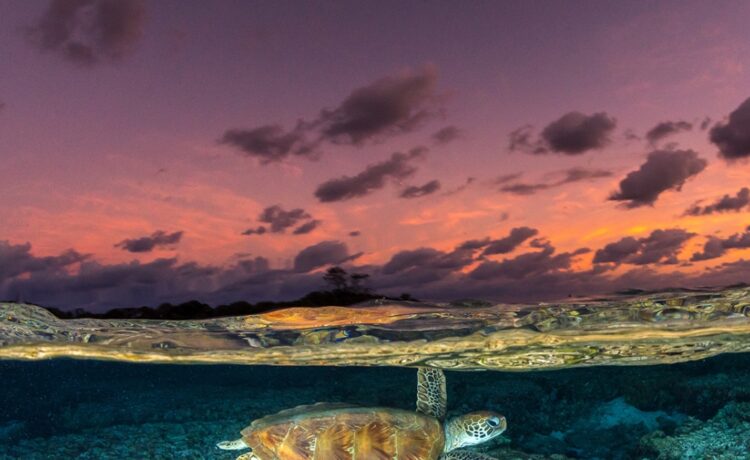Launched in 2020, the GFCR has raised more than US$90 million in grant funds and close to US$150 million in private investments for what it calls “coral-reef-positive” businesses around the world. This money has helped to support everything from ecotourism to sustainable aquaculture to seaweed farming. The GFCR aims to support over 400 reef-positive businesses and directly create more than 30,000 reef-positive jobs by 2030.
In the UNESCO-designated Seaflower Biosphere Reserve, home to 77 per cent of Colombia’s coral reefs, the fund is projected to raise more than US$16 million in private investment, returns and co-financing leverage, and support more than 65,000 community members with increased resilience across Colombia by 2030.
From 2023 to 2029, the programme in Colombia aims to increase live coral cover by 4 per cent and protect 825 square kilometers of reefs. It is also hoping to rein in the spread of algae, which can suffocate corals, while protecting herbivores, like turtles.
Experts expect this work to lead to an increase in fish, lobsters and other reef species, which will improve food security for local communities, and raise income from fishing and tourism by about 40 per cent.
The fund’s efforts come on the heels of 18 months of unprecedented ocean heat that is spelling disaster for the world’s coral reefs. The United States of America’s National Oceanic and Atmospheric Administration (NOAA) says more than 70 per cent of corals around the world have experienced heat stress that can trigger bleaching, a process that can lead to their death.
Yet these vital ecosystems continue to be degraded.
In Indonesia, the Global Fund for Coral Reefs launched a US$3 million, seven-year project focusing on the Bird’s Head Seascape and Pulau Sumba — an epicentre of marine biodiversity.
Indonesia boasts the most diverse and expansive coral reef system on Earth, containing 18 per cent of the world’s coral reefs.
Earlier this year, GFCR also supported a US$35 million debt-for-nature swap under the Tropical Forest and Coral Reef Conservation Act, allowing Indonesia to redirect debt payments towards coral reef conservation and showcasing the potential of innovative financial approaches.
Projects like these cannot stop ocean warming and coral bleaching being wrought by climate change. But they can reduce local stressors on coral reefs and give them a better chance of recovery and survival.
“What we’re doing is giving corals a fighting chance,” said Sinikinesh Beyene Jimma from UNEP. “That’s vital for protecting the stunning diversity of life in the ocean. And, just as importantly, it’s pivotal for the futures of millions of people who rely on marine ecosystems for their livelihoods.”
The planet is experiencing a dangerous decline in nature. One million species are threatened with extinction, soil health is declining, and water sources are less predictable. The Kunming-Montreal Global Biodiversity Framework sets out global targets to halt and reverse nature loss by 2030. It was adopted by world leaders in December 2022. To address the drivers of the nature crisis, UNEP is working with partners to take action in landscapes and seascapes, transform our food systems, and close the financial gap for nature.
The Global Fund for Coral Reefs (GFCR) was established to accelerate urgent investment and action to enhance the resilience of coastal reef ecosystems, communities and economies. The GFCR comprises two major financial vehicles: a UN-led Grant Fund and a private-sector-led large-scale private equity impact Investment Fund. The GFCR aims to promote sustainable ocean production, spur sustainable coastal development and ecotourism, forge circular economies and pollution management, and enable technologies for a sustainable future.
















